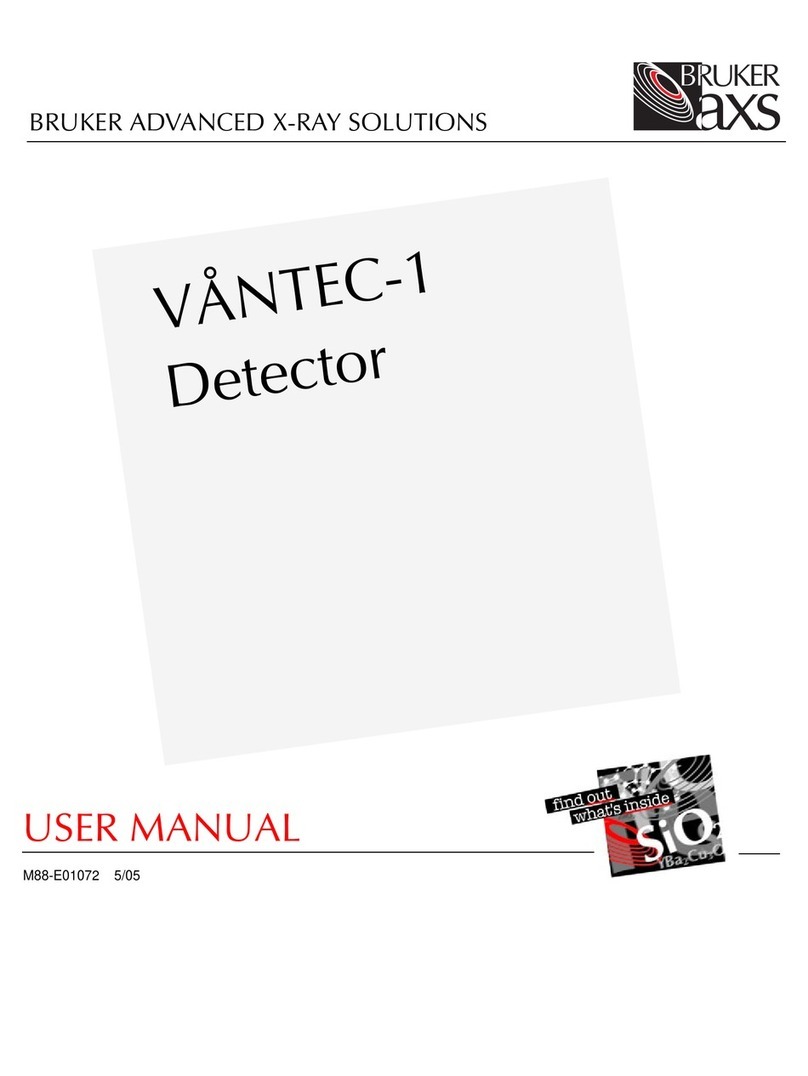
User Manual LYNXEYE XE Detector
ii DOC-M88-EXX240 V1 – 03.2014
4System Description..........................................................................................4-1
4.1The Detector .......................................................................................................................... 4-2
4.1.1Detector Specifications .......................................................................................................... 4-2
4.1.2Environmental Ratings........................................................................................................... 4-3
4.1.3Detector Components ............................................................................................................ 4-4
4.1.4Detector Cables and Connectors........................................................................................... 4-5
4.1.5Detector Status LEDs ............................................................................................................ 4-7
4.2Detector Optics.................................................................................................................... 4-10
4.3Counterbalance ................................................................................................................... 4-13
5Hardware Installation in the D8 .......................................................................5-1
5.1Servicing Precautions........................................................................................................... 5-1
5.2Shipping and Unpacking ...................................................................................................... 5-2
5.3Hardware Installation ............................................................................................................ 5-2
5.3.1Connect the Cable Wiring ...................................................................................................... 5-2
5.3.2Mount the Detector to the 2-Theta Axis ................................................................................. 5-6
5.3.3OpCo Registration of Additional Components ....................................................................... 5-9
6Software Configuration....................................................................................6-1
6.1Communication Line............................................................................................................. 6-1
6.2Detector Configuration ......................................................................................................... 6-1
6.3Detector Trimming and Energy Calibration........................................................................ 6-6
6.3.1Veto Trimming........................................................................................................................ 6-6
6.3.2Low and High Discriminator Trimming................................................................................. 6-10
6.3.3Discriminator Setting and Kβ-Suppression .......................................................................... 6-15
6.3.3.1Discriminator Setting..................................................................................................... 6-16
6.3.3.2Check of kβ-suppression .............................................................................................. 6-23
6.4Spatial Calibration............................................................................................................... 6-28
6.4.1Perform Positional Calibration ............................................................................................. 6-28




























